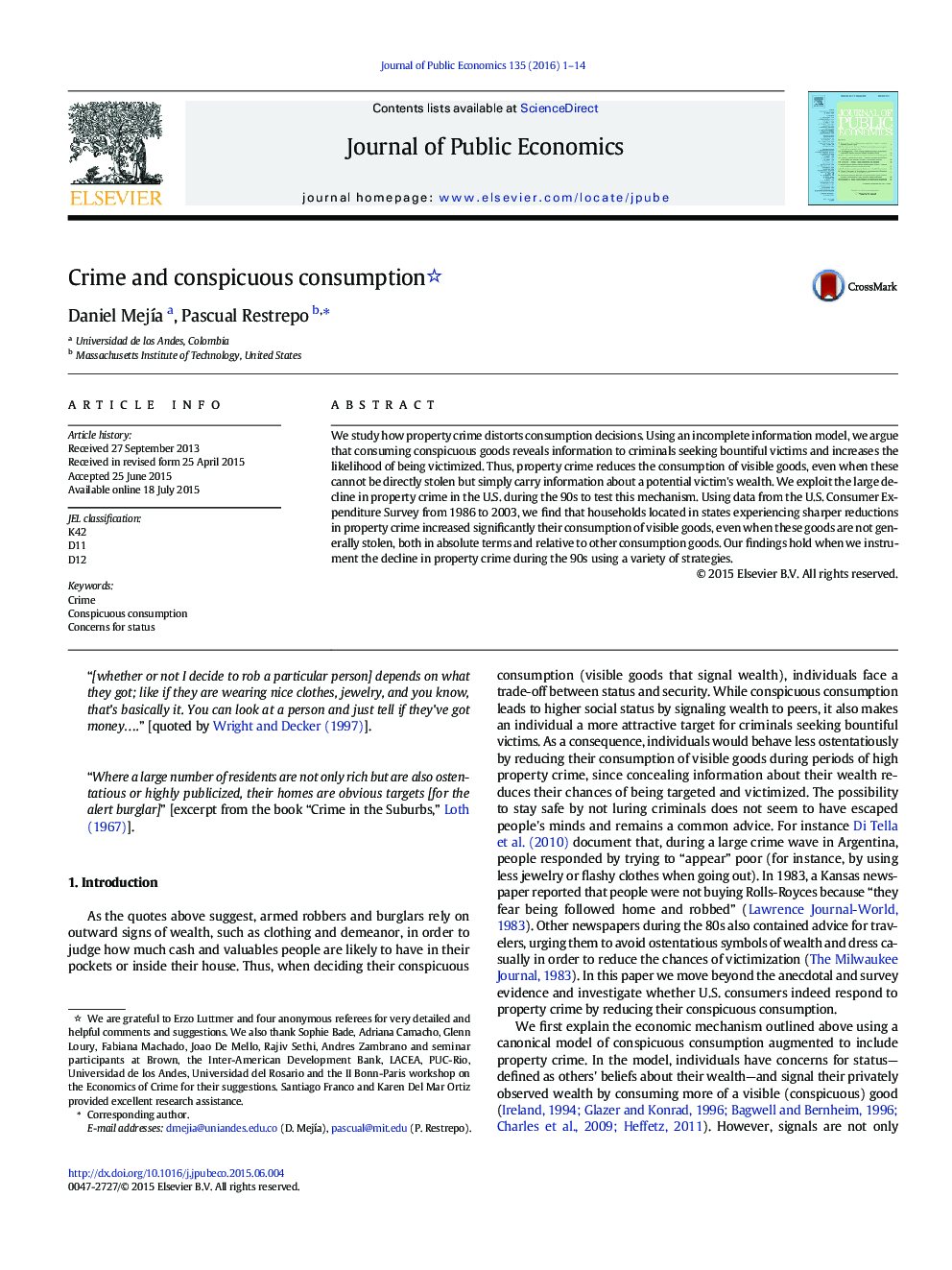| Article ID | Journal | Published Year | Pages | File Type |
|---|---|---|---|---|
| 968619 | Journal of Public Economics | 2016 | 14 Pages |
•We argue that consuming conspicuous goods reveals information to criminals seeking bountiful victims.•Property crime reduces the consumption of visible goods, even when these cannot be stolen but simply carry information about a potential victim's wealth.•We test this mechanism using data from the U.S. Consumer Expenditure Survey from 1986 to 2003.•We find that households located in states experiencing sharper reductions in property crime increased significantly their consumption of visible goods.
We study how property crime distorts consumption decisions. Using an incomplete information model, we argue that consuming conspicuous goods reveals information to criminals seeking bountiful victims and increases the likelihood of being victimized. Thus, property crime reduces the consumption of visible goods, even when these cannot be directly stolen but simply carry information about a potential victim's wealth. We exploit the large decline in property crime in the U.S. during the 90s to test this mechanism. Using data from the U.S. Consumer Expenditure Survey from 1986 to 2003, we find that households located in states experiencing sharper reductions in property crime increased significantly their consumption of visible goods, even when these goods are not generally stolen, both in absolute terms and relative to other consumption goods. Our findings hold when we instrument the decline in property crime during the 90s using a variety of strategies.
